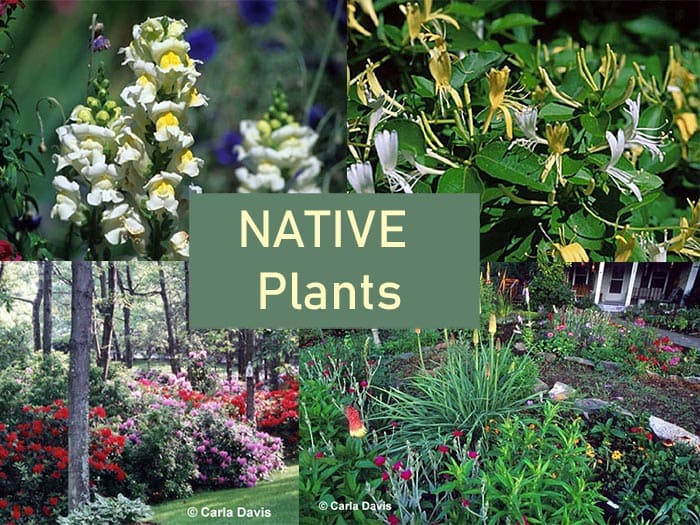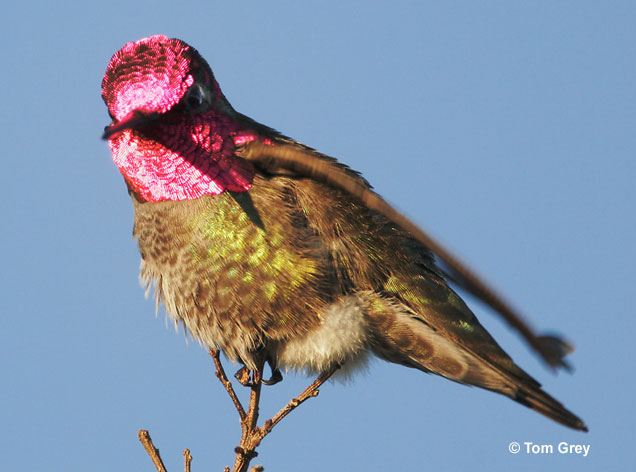
Connecticut Plants for Wildlife Habitat & Conservation Landscaping
Do you enjoy observing nature…hearing the song of the chickadee…watching hummingbirds fill up on nectar from trumpet vines…listening to the chattering of squirrels…seeing the beauty and grace of a monarch butterfly perched on a milkweed… experiencing the antics of a Mockingbird…the cooing of the Mourning Doves…the swiftness of the Cottontail…and the brilliance of a Cardinal or Baltimore Oriole?
If the answer is “yes”, you’ll probably want to landscape your property for wildlife so you can experience even more from Mother Nature by attracting more wildlife to your property.
Wildlife doesn’t just randomly appear in a given area. It is there because of favorable habitat. The essential elements that you must provide in your habitat are food, water, cover and a place to raise a family. To attract the most wildlife, you need native trees, shrubs, groundcover, vines and wildflowers, many of which will provide food and shelter.
Native or indigenous plants naturally occur in the region in which they evolved. They are adapted to local soil, rainfall and temperature conditions, and have developed natural defenses to many insects and diseases. Because of these traits, native plants will grow with minimal use of water, fertilizers and pesticides. Wildlife species evolve with plants; therefore, they use native plant communities as their habitat. Using native plants helps preserve the balance and beauty of natural ecosystems.
Remember the function served by plants and structures is more important than their appearance. In other words, don’t base your planting decisions solely on what a plant looks like. Following are WindStar Wildlife Institute’s plant recommendations for wildlife habitats in Connecticut:
Trees
Fall Nuts–Oaks (White, Swamp White, Chestnut, Red, Black, Scarlet & Pin): Hickories (Shagbark, Mockernut, Bitternut & Pignut); American Beech; Butternut Walnut; Black Walnut
Fall/Spring/Summer Seeds–Sugar Maple; Eastern Hop Hornbeam; Ash (White, Green & Black); Red Maple; American Hornbeam; Silver Maple; American Elm
Winter Cover/Food
White Pine; Eastern Hemlock; Eastern Red Cedar; American Holly; Red Pine; Black Spruce; Red Spruce; Eastern Hemlock; American Mountain Ash

When you are in Connecticut, expect to see Hummingbirds as they are very common.
Shrubs
Summer fruits
Highbush and Lowbush Blueberry; Blackberry; Black Raspberry; Serviceberry
Fall fruits
Dogwoods (Red-osier, Silky, Flowering, & Gray); Common Elderberry; Wild Cherry (Black, Pin & Chokecherry); Spicebush; Viburnums (Arrowwood, Mapleleaf, Nannberry, & Witherod)
Winter fruits
Bayberry; Highbush Cranberry Viburnum; American Holly; Inkberry; Black and Red Chokeberries; Winterberry; Staghorn Sumac
Wildflowers
Cardinal Flower; Goldenrods; Daisies; Wood Asters; Jewelweed; Bearberry; Butterflyweed; Wild Blue Phlox;
Groundcover
Partridgeberry
Vines
American Bittersweet; Virginia Creeper; Wild Grape; Smilax; Trumpet Honeysuckle; Climbing Bittersweet; Virgin’s Bower
Grasses
Little Bluestem; Big Bluestem; Switchgrass
Connecticut is New England’s second smallest and southernmost state. The southerly flow of the Connecticut River divides the state roughly in half. The coastal plain and central valley are relatively flat; they contain most of the larger cities. Other parts of the state are hilly, with the highest altitudes in the northwest corner. Hills are largely covered with hardwood forests, and about two-thirds of the state is in open land. The Connecticut Botanical Society can provide lists of native plants for a specific region.
For more information on improving your wildlife habitat, visit the WindStar Wildlife Institute web site. On the web site, you can also apply to certify your property as a wildlife habitat, register for the “Certified Wildlife Habitat Naturalist e-Learning course, become a member and sign up for the FREE WindStar Wildlife Garden Weekly e-mail newsletter.

